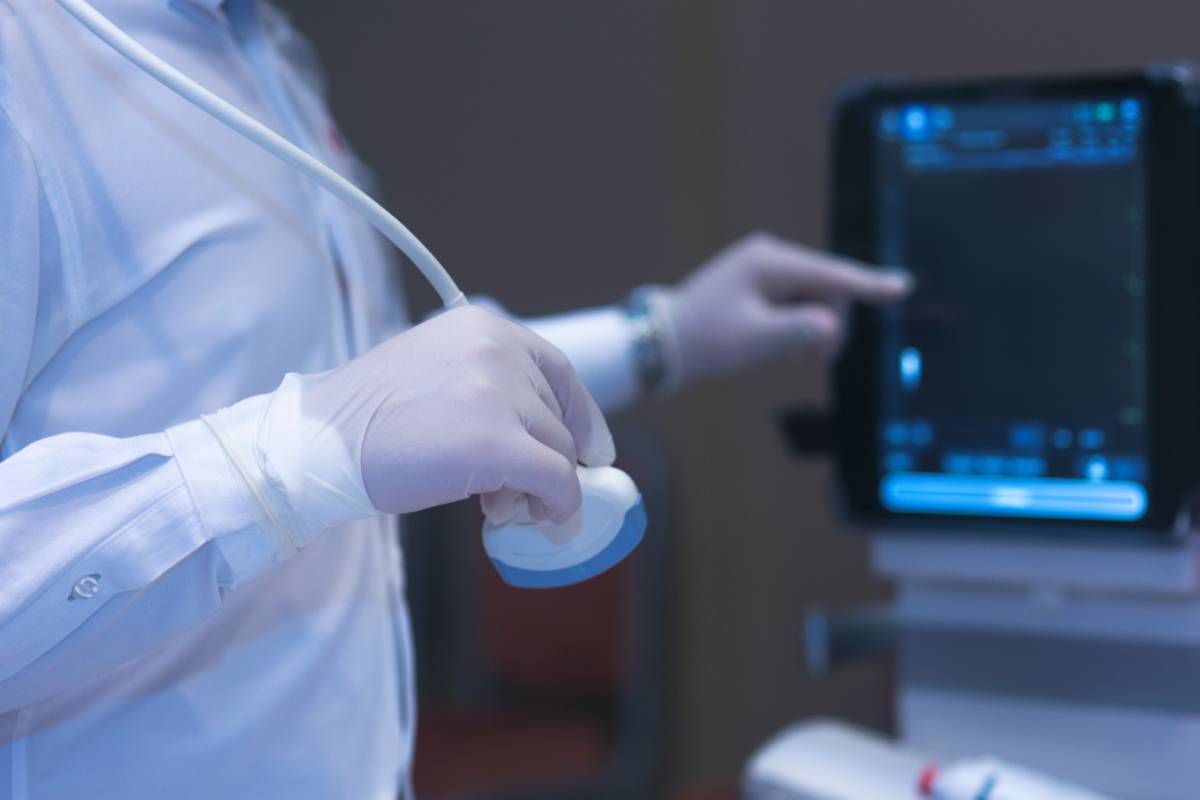Technological Tools to Guide Regional Anesthesia
February 20, 2023
Regional anesthesia is often administered with guidance to ensure correct placement and to avoid causing damage, because of the precision required. Currently, the gold standard of care for administering regional anesthesia is ultrasound guidance. However, technological tools to guide regional anesthesia continue to be developed. An article recently published in JAMA announced the FDA approval of a new AI technology that could enhance ultrasound guidance of regional anesthesia.1
The technology, called ScanNav™ Anatomy Peripheral Nerve Block (PNB), was invented by the company Intelligent Ultrasound Group, a British company headquartered in Cardiff whose mission “is to make clinical diagnostic ultrasound easier to learn and simpler to use.”2 The company had already developed training simulations to help teach physicians accurate visualization and identification of key anatomical structures using ultrasound. Now, with the development of ScanNav™, the company aims to make the identification of anatomical structures using ultrasound easier in real time. This technology is a promising option among the tools being developed to guide regional anesthesia and increase accuracy.
The technology utilizes artificial intelligence and deep machine learning to identify and highlight anatomical structures which are relevant to the administration of regional anesthesia throughout a live ultrasound scan. Added colors during the live scan aims to enhance the highly nuanced and sensitive ultrasound image. This, in turn, theoretically makes ultrasound imaging more reliable and useful in the hands of physicians who may be less comfortable with the technology. In a promotional video for ScanNav™ technology, Intelligent Ultrasound Group claims that their platform will improve patient outcomes and make ultrasound-guided anesthesia safer and more efficient.3
ScanNav™ is trained to identify 10 key regions relevant to the administration of regional anesthesia, seven of which are “Plan A” blocks identified by Turbitt et al.:4 the interscalene brachial plexus block, the axillary brachial plexus block, the femoral nerve block, the adductor canal block, the popliteal sciatic nerve block, the erector spinae plane block, and the rectus sheath block. The intensity of the added color can be modified according to user preference, and another setting allows for the colorized and non-colorized image to be viewed side-by-side. Physicians who want to implement this tool can train with 3D reference material to assist with proper probe guidance.3
The release of this latest AI platform reflects the growing desire for more advanced tools in anesthesiology, according to a publication in the British Journal of Anesthesia, which is especially relevant for challenging techniques like regional anesthesia that benefit from a technological guide.5 The same study found that ScanNav™ reduced block failure by over 80 percent. It is important to note, however, that authors of the study are affiliated with the company that developed the tool. ScanNav™ technology has been approved for use in the U.S., the UK, and within the European Union. It has been most widely adapted close to its homebase in the UK; some notable institutions, including the University College of London Hospital, have integrated the technology into their training programs.6 In the U.S., the company has secured a sales resources base in Amaretto, Georgia.4
It is likely that artificial intelligence technology will continue to be integrated in more dramatic ways both in the practice of anesthesiology and the field of medicine as a whole. Like regional anesthesia, many techniques in medicine require a high level of skill and could benefit from tools to guide their use. While these developments herald a new era of improved accuracy and data available for the personalization of care, they can also inherently increase the demands of specialized training.
References
1 Larkin, H. D. (2022, December 6). FDA approves Artificial Intelligence Device for guiding regional anesthesia. JAMA. Retrieved from https://jamanetwork.com/journals/jama/article-abstract/2799174
2 Our vision. Intelligent Ultrasound. (2022, December 1). Retrieved from https://www.intelligentultrasound.com/about-us/
3 ScanNav anatomy peripheral nerve block (PNB). Intelligent Ultrasound. (2022, December 1). Retrieved from https://www.intelligentultrasound.com/scannav-anatomy-pnb/
4 Turbitt, L. R., Mariano, E. R., & El‐Boghdadly, K. (2019). Future directions in regional anaesthesia: Not just for the cognoscenti. Anaesthesia, 75(3), 293–297. https://doi.org/10.1111/anae.14768
5 Bowness, J. S., Burckett-St Laurent, D., Hernandez, N., Keane, P. A., Lobo, C., Margetts, S., Moka, E., Pawa, A., Rosenblatt, M., Sleep, N., Taylor, A., Woodworth, G., Vasalauskaite, A., Noble, J. A., & Higham, H. (2023). Assistive artificial intelligence for ultrasound image interpretation in regional anaesthesia: An external validation study. British Journal of Anaesthesia, 130(2), 217–225. https://doi.org/10.1016/j.bja.2022.06.031
6 Intelligent ultrasound expands functionality and availability of ScanNav anatomy PNB. Intelligent Ultrasound. (2022, October 20). Retrieved from https://www.intelligentultrasound.com/2022/10/20/intelligent-ultrasound-expands-functionality-and-availability-of-scannav-anatomy-pnb/